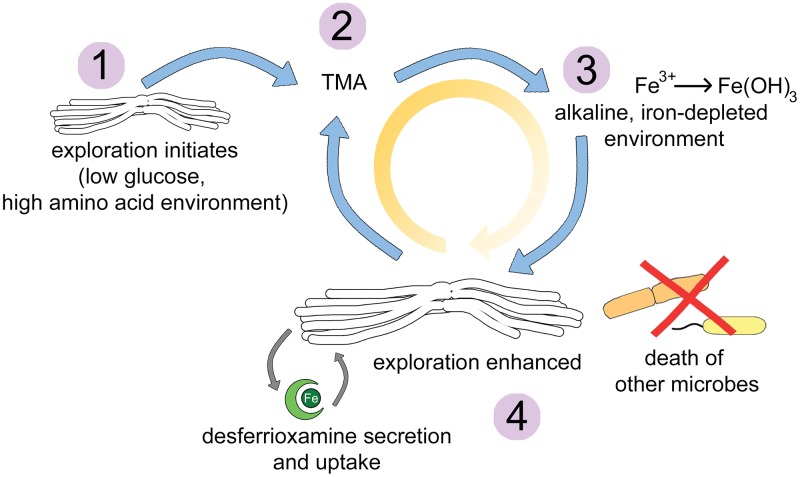FIG 8.
Working model for how S. venezuelae explorer cells thrive and impact the survival of other microbes in alkaline, low-iron environments. Step 1: S. venezuelae exploration is triggered by a combination of low glucose and high amino acid concentrations. Step 2: explorer cells release the VOC TMA into the surrounding environment. Step 3: TMA raises the pH of the environment, concomitantly reducing the solubility and bioavailability of iron. Step 4: to cope with low-iron conditions, S. venezuelae explorer cells release desferrioxamines. These siderophores return solubilized iron to the cells. At the same time, S. venezuelae exploration is enhanced, perhaps as a mechanism to reach environments richer in iron. Enhancing exploration leads to increased TMA production, and this may create a positive-feedback loop (circular arrow) where TMA depletes iron, explorer cells spread to get more iron, TMA production continues, and the cycle repeats. Within these alkaline, iron-depleted environments, the growth of other bacteria and fungi is reduced.

